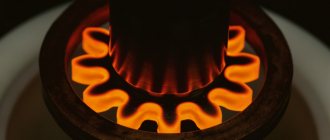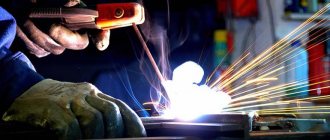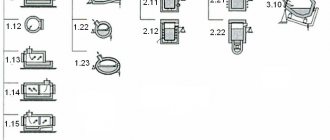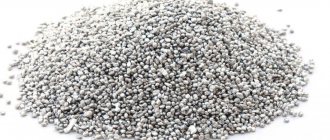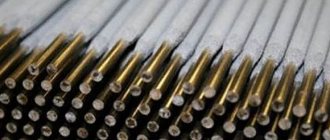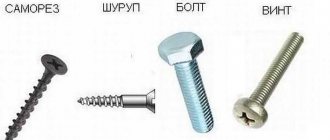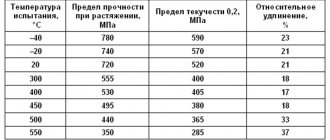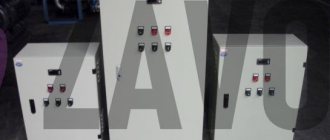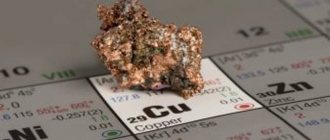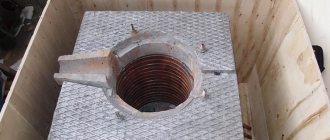Such devices belong to the group of electrothermal equipment, the central purpose of which is heating or melting all kinds of metals and alloys. Due to the formation of a galvanic field near the cultivated substance in the middle of the furnace, it is heated due to the conversion of electricity into thermal energy, using the influence of inductive current.
The crucible furnace is in great demand in many areas of production and processing of substances. With the support of this device, they create the holding and melting of first-class steel, cast iron, non-ferrous metals and, in addition, precious metals. Due to the use of melting furnaces, it is possible to form an alloy sample having an unmistakable chemical structure and an increased degree of homogeneity and purity. In addition, a crucible furnace is often used in conjunction with other types of melting apparatus in order to achieve the necessary chemical properties. composition of the cultivated material. From time to time, such installations can be operated as drip mixers in order to maintain the molten alloy in liquid form over an extended period.
Operating principle of induction crucible furnace
This device includes 3 main elements:
- Working volume in the form of a crucible;
- Electrical inductor;
- Power control unit.
Almost always the shape of the crucible has a cylindrical structure, the material from which it is made must be fireproof. The crucible body must be placed in an inductor, which is connected through special electrical inputs to the power source. Before turning on the unit, the crucible cavity is filled with the material being processed, after which the charge is heated due to the absorption of electrical energy by the raw material.
According to the principle of operation, the crucible liver can be compared to a large transformer, since, in fact, the inductor is its primary winding, and the processed metal itself serves as a secondary one, which, in addition, also performs the function of a load action. As a result, it turns out that the electric current that enters the inductor passing to the charge turns into an electromagnetic field, which, after passing through the molten metal, again flows into electricity and, when colliding with the primary current, is converted into thermal energy.
The degree of power and the amount of heat generated from eddy currents depend on the frequency of alternating magnetic fields. This means that to ensure productive operation of the device, the electrical network supplying the inductor must have a high frequency. Since in a standard network flow of 220 or 380 Volts there is only 50-60 Hz, special converters are used that generate the required frequency within 400-500 Hz.
Main types of melting furnaces
Modern metallurgy is clearly divided into two segments: ferrous, which accounts for 90% of the total market, and non-ferrous, which accounts for the remaining 10%. Such duality affects the size of units for melting raw materials. For example, to produce iron and cast iron, giant blast furnaces and other devices are used that process hundreds of tons of metal at a time. With non-ferrous metals, everything is different, since many of them are rare and expensive and their production volume is not very large, since there is no need for it. So sometimes you need devices where you can melt several tons or, conversely, only ten kilograms of raw materials. The latter are used in jewelry workshops, decorative forges, or for the production of small-volume metal products.
Based on heating methods, ovens are divided into several categories:
- Thermal, which use highly heated gas or air;
- Electric, in which the thermal effect of electric current is used;
- Arc, operating based on the temperature of the electric arc;
- Streaming, using plasma or electric beam;
- Muffle, which are heated by spiral-type TEN;
- Induction, in which the desired internal temperature is achieved using vortex flows;
- Resistance furnaces, inside which a high voltage electric current is passed through the metal.
Types of melting furnaces
Induction crucible electric furnace
There are many varieties of these devices, but an induction crucible furnace is the most technologically advantageous equipment, in demand by the majority of metallurgical enterprises. Such furnaces are based on the principle of the influence of an electromagnetic field directly on the molten metal, which arises due to the induction of a high-frequency current.
Due to this operating principle, maximum uniformity of thermal energy distribution throughout the entire space of the processed material is achieved, which completely eliminates overheating of the metal throughout the entire melting process. In addition, this helps to obtain the most homogeneous structure.
Characteristics
Copper is one of the first metals that people began to obtain and use for further processing. Products made from an alloy or pure copper were used even before our era. This demand arose as a result of ease of processing using conventional methods, as well as ease of melting and casting.
The material has a characteristic red-yellow tint, and due to its softness, it can be easily deformed, melted, processed and made into various objects. When the surface comes into contact with oxygen, it begins to form an oxide film, which gives a beautiful shade.
A very significant characteristic is the electrical and thermal conductivity of the material, which ranks second among all types of metals, with silver in first place. These characteristics made it possible to use it in the electrical field, as well as for rapid heat removal.
Crucible electric furnace for melting aluminum and copper
As the name already implies, these mechanisms have specifications for melting copper, ferrous metal, cast iron, and aluminum. Depending on the dimensions, 5-5000 kg of metal can be placed in it. Melting of the metal in these devices occurs due to an electromagnetic field, which brings the material to a homogeneous composition, creating high quality raw materials for further casting of various parts from it.
Throughout the entire operating process of the device, there is no need to use heating elements, since heating occurs directly inside the material being processed, due to the passage of alternating current transformed by the electromagnetic field through its particles.
Step-by-step instructions for melting
To melt copper at home, you need to make the temperature a little higher than the one at which it will melt. In this case, it will not be possible to use a jar and a fire or similar methods. There will be no result.
It is recommended to use a blast furnace, and it is important that the heat be regulated. You can make a smelting furnace with your own hands from ordinary materials. The exact diagram and principle of operation can be used on various forums, watch the video with step-by-step instructions.
Old fire extinguishers are often used to create a stove. If you choose this method, you need to cut off the top part and make a lid that will close. Additionally, the interior space is treated with clay and a heating element is installed.
Smelting should be carried out in a container that itself will not melt or deform due to high temperatures, and accordingly, can withstand more than 1100 degrees. Additionally, remelting copper products requires the creation of a nitrogen environment; if it is not there, the material will deteriorate.
When everything is ready, you can melt the material and get a single ingot from it, which can be used in the future for your needs.
Melting in a muffle furnace
You can melt copper at home using the following equipment:
- The crucible into which the metal will be placed for melting.
- Tongs that can remove the crucible from the furnace.
- Muffle furnace or forge for heating.
- Mold for pouring liquid copper.
- Steel hook.
The step-by-step casting algorithm is as follows:
- The metal for smelting must be crushed and placed in a crucible. The finer the state, the faster the material will melt. The finished crucible is placed in a furnace heated to the required temperature.
- When the copper becomes liquid and completely melts, you need to remove the crucible with tongs, and you need to act carefully but quickly. There will be chaff on the surface of the liquid mass; use a hook to move it and pour the material into the prepared container.
- It is not recommended to use pure metal to create complex shapes or small objects, this is caused by the poor fluidity of copper without impurities. In this case, it is better to use alloys that contain zinc, tin and other metals.
Homemade devices
To smelt copper it is not necessary to use special devices; you can use homemade structures. The main condition is to comply with safety precautions and basic rules for working with the material.
If there is no muffle furnace or forge, then a simple gas burner is used. True, the copper itself will come into contact with oxygen, due to which rapid oxidation occurs. To prevent the appearance of a thick layer on the surface, you must use crushed coal when the metal takes a liquid form.
To obtain a liquid consistency of the material you need:
- Install a support on the ground; for this, sand-lime bricks are used; a metal mesh with small cells is placed on them.
- Coal is poured onto the grid and heated using a gas lamp. To obtain a high temperature, you can use a vacuum cleaner that is aimed at the coal and produces a strong air flow.
- A crucible is placed on the hot material, you need to wait until everything melts. Then pour the resulting liquid into the mold.
You can also use a propane-oxygen flame at home. It is recommended to use it for alloys containing tin or zinc.
If you have a powerful microwave oven at home, then you can carry out the melting procedure in it. For safety, as well as to preserve heat and protect the furnace itself, it is necessary to wrap the crucible in a heat-resistant material, and also use a cover for it. After placing it, you need to set the maximum mode and wait for the metal to melt.
Due to its low melting point, copper can be easily used to make various parts and objects right at home. Using the described methods, you can achieve high-quality results with minimal investment. As soon as the temperature drops, the material will begin to take on a solid state and then cool completely. To create small or complex parts, alloys must be used.
During the work, it is recommended not to bring the material to a boil, since it loses its properties, becomes less hard after cooling, and deteriorates visually. As a result of boiling, gas is released, and after cooling the products will have a porous surface.
We also recommend reading:
Author: Kolesnikov Yuri Fedorovich, heating engineer*
© When using site materials (quotes, images), the source must be indicated.
Crucible is a vessel for melting metal. As a rule, conversion metal is melted in crucibles, i.e. already brought to the required degree of quality for casting into a mold or refining (deep purification from impurities). The general line of development of large-scale metallurgy is to reduce the number of processing steps, up to the release of conditioned metal directly from the melting furnace, but in industry crucible melting still retains significant importance, and in handicrafts and jewelry it dominates.
The crucible is not just a fairly heat-resistant vessel. Its chemical composition and design must correspond to the type of metal being melted and the melting mode. This article describes how to make a crucible with your own hands and what conditions it must satisfy for use at home or in a small workshop. For beginner metallurgists, you will first have to touch on the metal smelting process itself, because... The requirements for the crucible are determined mainly by its conditions.
Melting metal in a crucible at home
Crucible induction furnace lining
The design of the crucible furnace lining includes: under, pouring nose, cover, collar and crucible. Depending on the quality and fire resistance of the materials used to create the lining, its service life is determined. That is, the better the material, the more melts can be produced in a crucible furnace. The crucible is the main element of any lining inside the working chamber of the stove. It is made by upholstering the buffer part or by laying fire-resistant bricks. The main materials for lining are:
- Quartzite Si02;
- Magnesite Mg0;
- Spinel Mg0 + Al-203;
- Corundum Al-20З;
- Mullite 3Al-20З x 2Si02
- Mullite corundum Al-20З;
- Fireclay brick;
- Zirconium Zr2 x Si02;
- Fireclay graphite;
- Pure graphite.
Quartzite lining is the most common and is called acid crucible furnace lining. In such a chamber you can melt steel, cast iron, and carbon metals. There are certain restrictions under which phosphorus, silicon, high-alloy steel and metal with a high carbon content cannot be melted in an acid lining. Such restrictions are associated with the release of calcium oxide during the combustion of impurities, which are very quickly absorbed under the influence of high temperature. In addition, when using an acid lining, it is impossible to melt heat-resistant steel, since its melting threshold is almost equal to the temperature at which quartzite begins to melt.
In order to maximize the service life of the lining for a crucible furnace, it is necessary to select it in accordance with the type of charge that will be melted in it. In order for the device to operate as efficiently as possible, the lining must meet certain requirements:
- Promote the best quality of the resulting material;
- Have a maximum number of cycles for melting;
- Be as safe as possible for the operator operating the crucible furnace;
- There should be no circumstances that provoke interruptions in the smelting process;
- Have a reasonable price and have the lowest possible consumption potential;
- Emit hazardous waste into the environment at an acceptable level.
With the help of a lining, maximum fire resistance of the crucible itself is achieved so as not to provoke physical and chemical interactions between the charge and the walls of the working chamber. In addition, the materials from which the lining is made must 100% protect the inductor elements and reduce the thermal stress around the crucible.
Crucible melting
metals, crucible process, the process of obtaining metals and their alloys in liquid form in pots made of refractory materials -
crucibles.
Melting is the oldest method of smelting metals (copper, bronze).
Aristotle
(4th century BC) wrote about steel The process was widespread mainly in the countries of the Ancient East (India, Persia, Syria, etc.). Crucible steel was used to produce edged weapons (including damask blades), sharp knives and durable tools. In later centuries, the secret of T. steel was lost.
The method was revived in Europe in the 18th century. B. Gentsman
(England, 1740). According to his method, Swedish cemented steel was melted under a layer of green glass flux in a crucible installed in a natural draft furnace heated with coke. The result was pure and homogeneous steel, suitable for making knives, razor blades, watch springs and pendulums. Technology reached its greatest development in the first half of the 19th century.
The basic techniques of technological process remained unchanged for a long time, but the process was the subject of research and improvement. Changes were made to the composition of the charge, the manufacture of crucibles, and the design of furnaces. The Englishman D. Mushet discovered the beneficial effect of manganese on steel and began adding manganese oxides to the crucible charge - he introduced the operation of steel deoxidation (1801). S. I. Badaev
proposed a furnace that combined 2 departments - cementation and crucible, the work in which was carried out alternately.
The method he proposed (1808) consisted of cementation of iron and subsequent melting of the resulting steel. P.P. Anosov,
working on the production of damask steel, discovered the process of gas cementation of iron during the process (1837).
The simultaneous implementation of both processes (carburization and melting) reduced the duration of the steel production process to 9-10 hours
instead of several days spent on the production of case-hardened steel.
The main feature of P. M. Obukhov’s
(1857) was the use of iron ore in steelmaking, which ensured the production of steel of a constant composition when the starting materials differed in carbon content. Large steel mills based on the Obukhov method appeared in Russia - in Zlatoust (1860), Perm (1863) and St. Petersburg (1865).
Although crucible steel was expensive and the process was low-productive, it remained for a long time the only material for the manufacture of critical tools and machine parts. Technology occupied a leading position in the production of high-quality steels until the advent of the electric furnace melting process. By the middle of the 20th century. production of crucible steel remained in Sweden. Its main purpose is to produce high-quality tools. The method is also used in non-ferrous metallurgy (mainly in small foundries and repair shops) to produce alloys of non-ferrous metals or for melting metals and alloys before pouring casting molds.
Lit.:
Lipin V.N., Metallurgy of cast iron, iron and steel, vol. 2, part 1, L., 1930; Mezenin N. A., The Tale of the Masters of Iron, M., 1973.
N. A. Mezenin.
Table of contents
Positive aspects of the crucible electric furnace
In fact, there are practically no disadvantages in the operation of a crucible furnace, and the advantages include the following points:
- Complete isolation of the processed material from other types of substances, which prevents the ingress of foreign bodies and impurities into it;
- Uniformity of the resulting mass due to the uniform distribution of the heating temperature by the electromagnetic field;
- The amount of volatile elements released by carbon monoxide is very small;
- Thanks to special equipment, you can easily regulate the temperature;
- High level of productivity;
- Relatively small dimensions of the device, minimizing the area it occupies;
- Comfort when working with a crucible furnace due to the low noise level, low heat generation and the absence of smoke in the room.
Crucible furnace operation
This type of thermal equipment is very popular in the work processes of repair and foundry shops that produce small and medium quantities of castings or repair castings. As for the operating conditions of crucible furnaces, they are conditioned by compliance with safety regulations on a par with the operation of electrical equipment of the same class. None of these devices are allowed for operation without special sensors that monitor the thickness of the crucible walls and, in the event of an emergency, automatically turn off the power and also emit an alarm sound. To provide the required electrical power, induction furnaces have separate system components, which consist of a transformer and a generator to increase the frequency (these elements must also be well protected to prevent electric shock to humans).
As for operating the furnace, there is nothing particularly complicated here, and with minimal skills in working with this equipment, a person will be able to cope with the process of melting metal. Moreover, the operation of the device can be fully automated, including loading and unloading of the processed material.
The most common applications for crucible furnaces are:
- Metallurgical sphere and everything related to the heat treatment of metals and ores;
- Testing laboratories and research centers;
- Some areas of the chemical industry.
Graphite crucible is
A thin-walled fireproof vessel made of heat-resistant material in which molten metal can be stored for a long time, the charge can be melted, heated by exposure to high temperature or by creating thermal activity inside the material being processed. In most cases, the graphite crucible is made in the form of a cone to make it easier for metallurgical plants to cast various parts. To make graphite more functional, zirconium, platinum, quartz or basalt are added to its composition.
An indicator of the performance and reliability of thermal equipment is the graphite crucible, since it is the only element that is subject to constant load. In addition, the thickness of the crucible wall has a very strong influence on the efficiency of the device itself. The thinner the walls, the higher the heat transfer and the lower the energy consumption, which a graphite crucible can provide. This type of material has a lot of advantages, including a minimal degree of expansion when heated, resistance to deformation even when exposed to ultra-high temperatures of about 1700 degrees.
Heat – cold – moisture chamber
Another specialized unit that is capable of qualitatively testing any production creation is a heat-cold-moisture chamber. When exposed to the object of research/testing, the climate chamber heat - cold - moisture provides all possible conditions in which the subject may find himself and demonstrate his resistance to them.
The heat, cold and moisture chamber may have different working volumes, which are set by the buyer for certain purposes. Such a chamber combines two different equipment - heat-moisture and heat-cold. This device is controlled using a controller.
The climatic test chamber of heat - cold - moisture influences the test item with cyclic temperature changes with varying degrees of air humidity for a set time. At the same time, the resistance of the object’s coating and its compliance with production requirements are tested.
